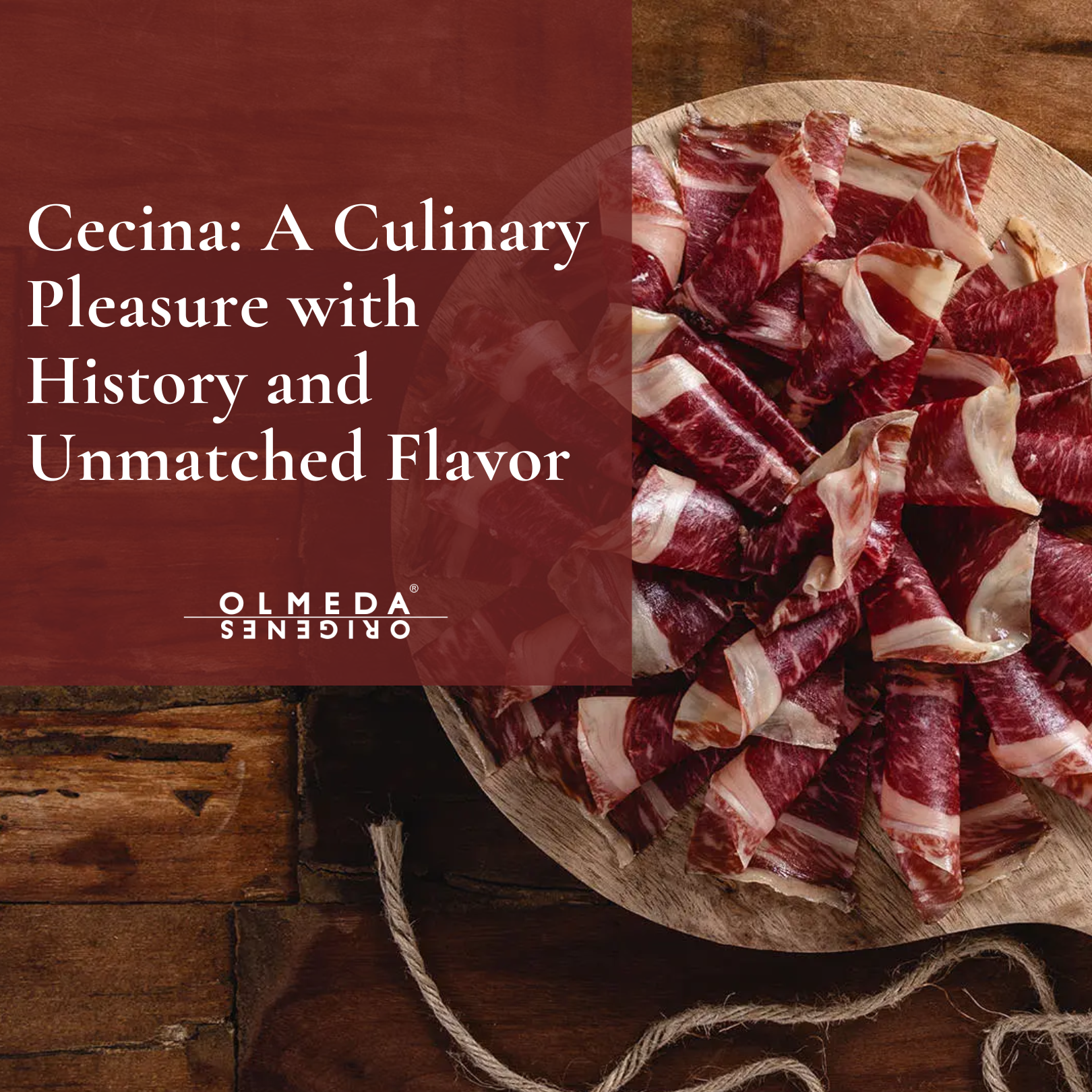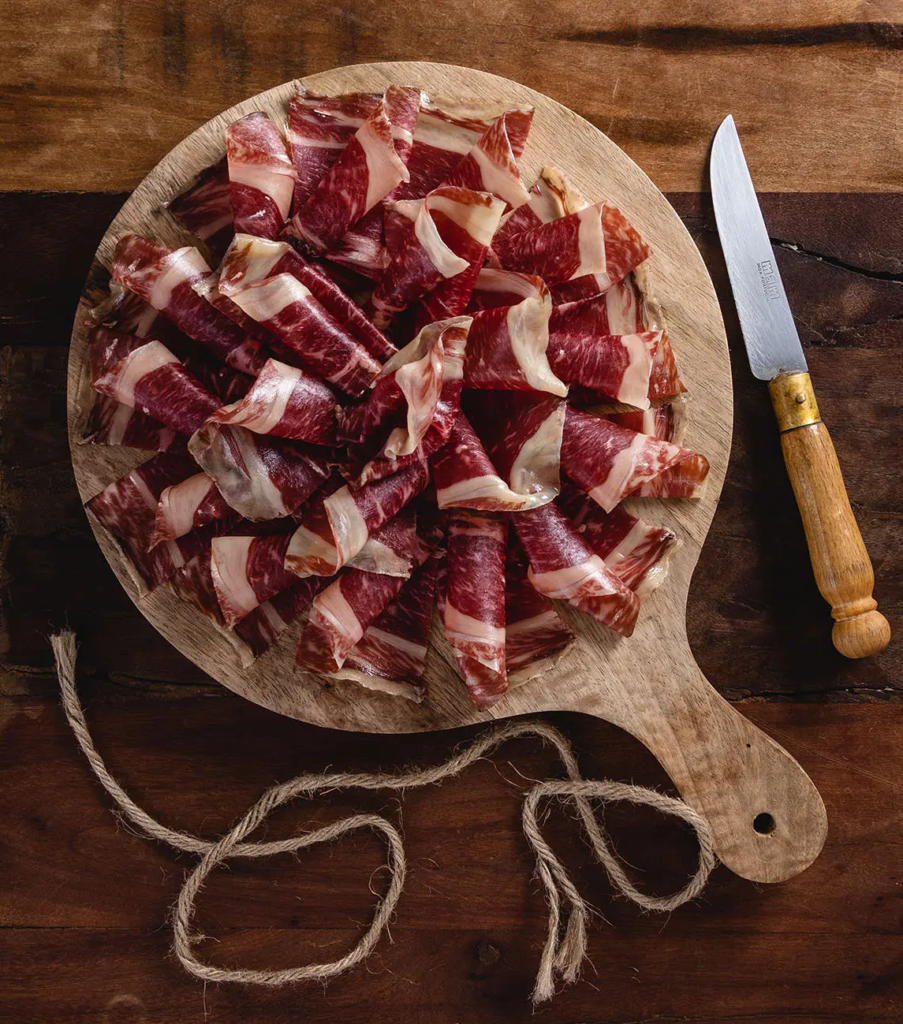
06 Mar Cecina: A Culinary Delight with History and Unparalleled Flavor, Discover How to Enjoy It to the Fullest!
BEEF HAM CECINA SLICED OLMEDA ORIGENES
A Culinary Delight Transcending Borders. Rooted in the food tradition of northern Castile and Leon, this exquisite delicacy has been a cornerstone of the livestock population’s diet throughout the centuries. More than just a meal, cecina embodies an unparalleled sensory experience. Its deep flavor, intoxicating aroma, and high nutritional value make it an irresistible choice for any discerning palate. When paired appropriately, cecina transforms into a sublime delicacy, capable of delighting the senses and satisfying the most refined gastronomic tastes.

Origin
Cecina, a culinary treasure of Spanish origin, holds a rich history dating back over two thousand years. This delicacy, similar to ham but made from beef, is obtained from various cuts of the hindquarters, such as the tapa, babilla, or contra. Its artisanal production process has been documented since ancient times, even described in the book “Res Rustica” written by Lucio Moderato in the year 42 AD, where the technique of preparing cecina is detailed in a surprisingly similar manner to today’s methods. The preservation of cecina continues to be carried out using salt and cold, an ancestral technique that has endured over the centuries to maintain this exquisite delicacy in optimal conditions.
Infiltration
Fat infiltration in cecina is a crucial factor for its quality and flavor. The more fat infiltration the meat has, the better it will be in terms of juiciness and flavor. However, it’s important to note that finding meat with excellent fat infiltration can be challenging, as it’s a trait that isn’t abundantly present in all cuts
The presence of fat in cecina not only contributes to its juiciness but also affects the curing process. Greater fat infiltration can prolong the curing time, allowing cecina to develop a richer bouquet, as well as more intense and complex flavors and aromas. This slow and careful curing process is essential for enhancing the unique characteristics of Olmeda Orígenes cecina and ensuring its exceptional quality.

Elaboration
Initial Weighing: The process begins with weighing the meat, determining the amount of salt and the necessary curing time.
Initial Drying: The meat is hung in a drying room where temperature and humidity are carefully controlled. During this period of 5 to 6 months, the meat dries, allowing the salt to penetrate its interior.
Transfer to the Cellar: After the initial drying phase, the meat is transferred to a cellar where the curing process continues at room temperature. Here, the cecina develops its characteristic flavor and texture over an additional period of approximately 8 months.
Curing Time Control: Throughout the process, each piece of cecina is closely monitored to determine the optimal maturation time. This time may vary depending on factors such as the size of the piece and environmental conditions.




